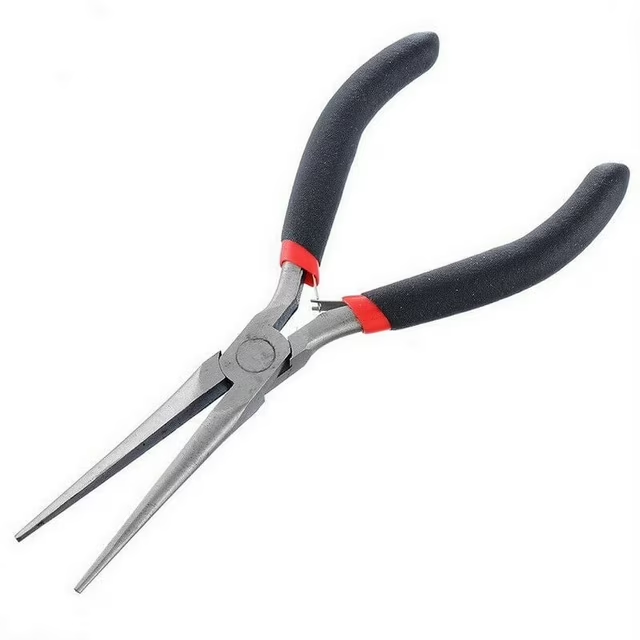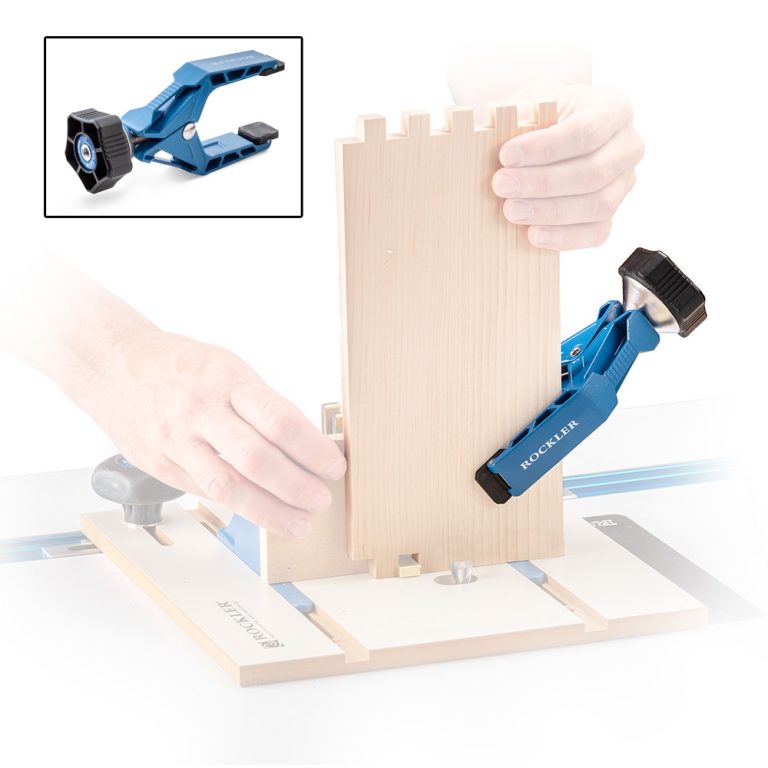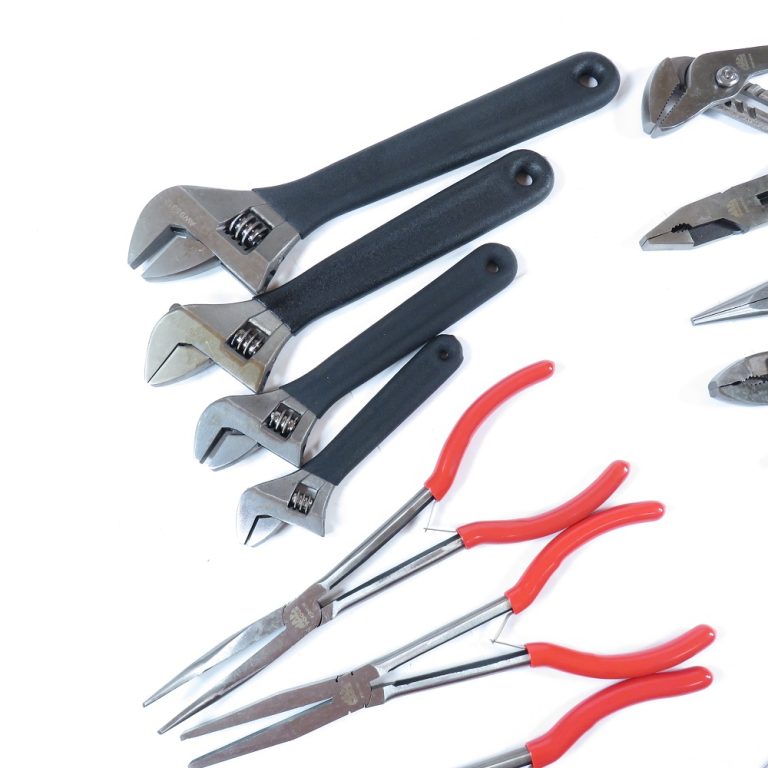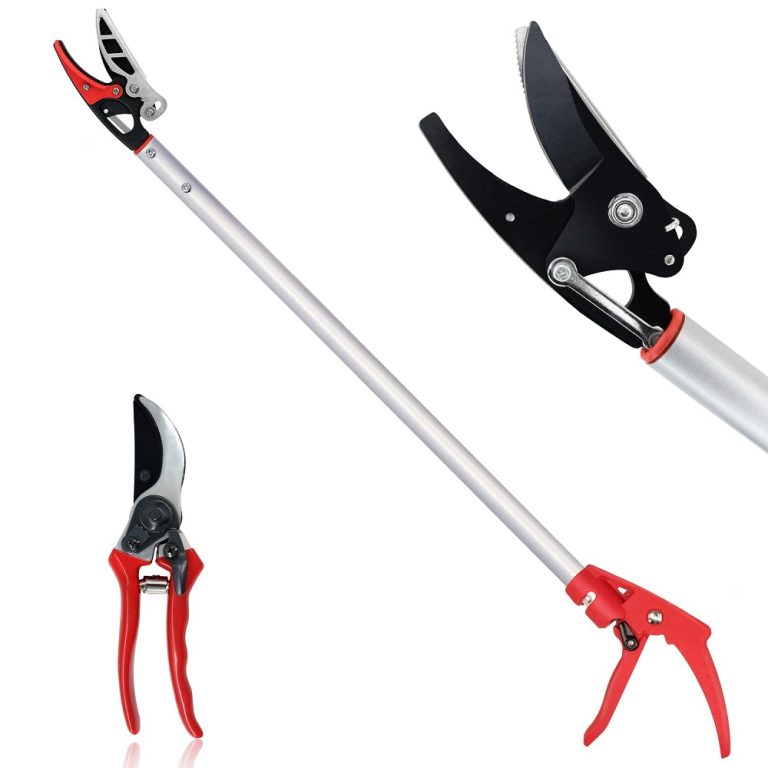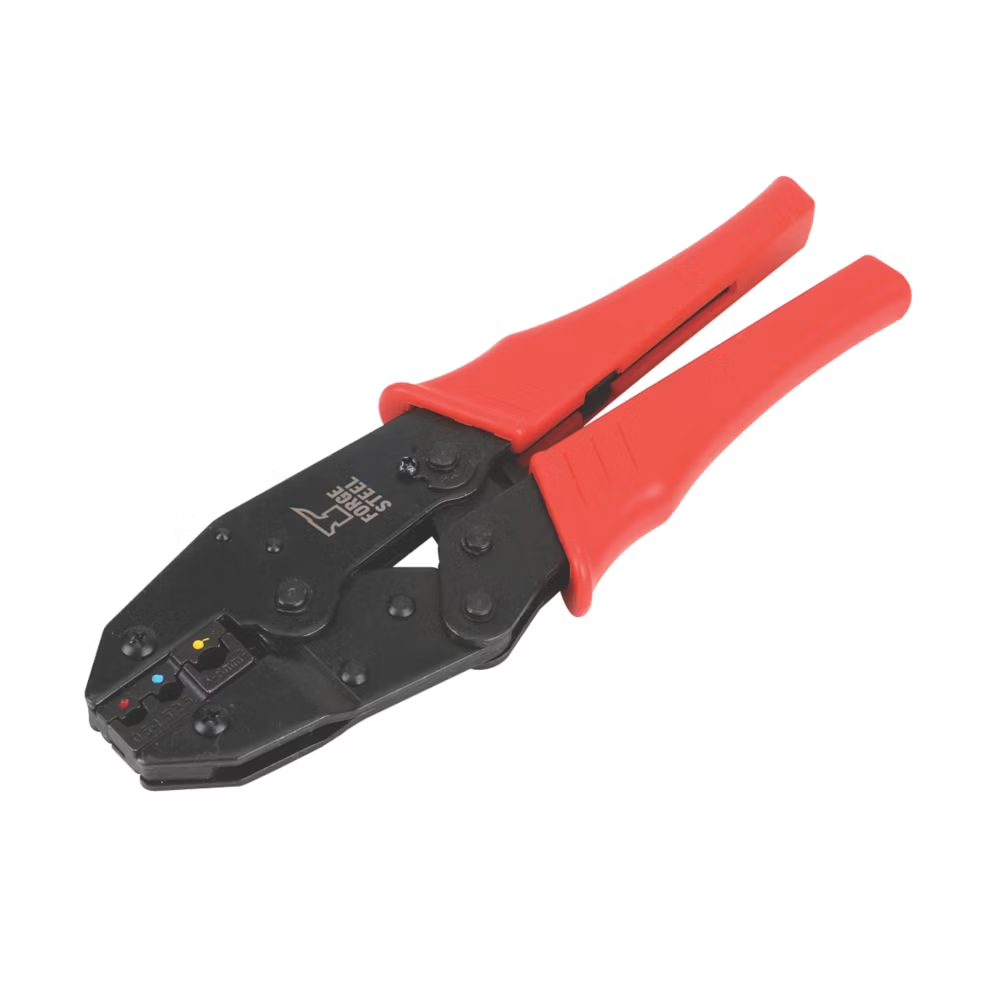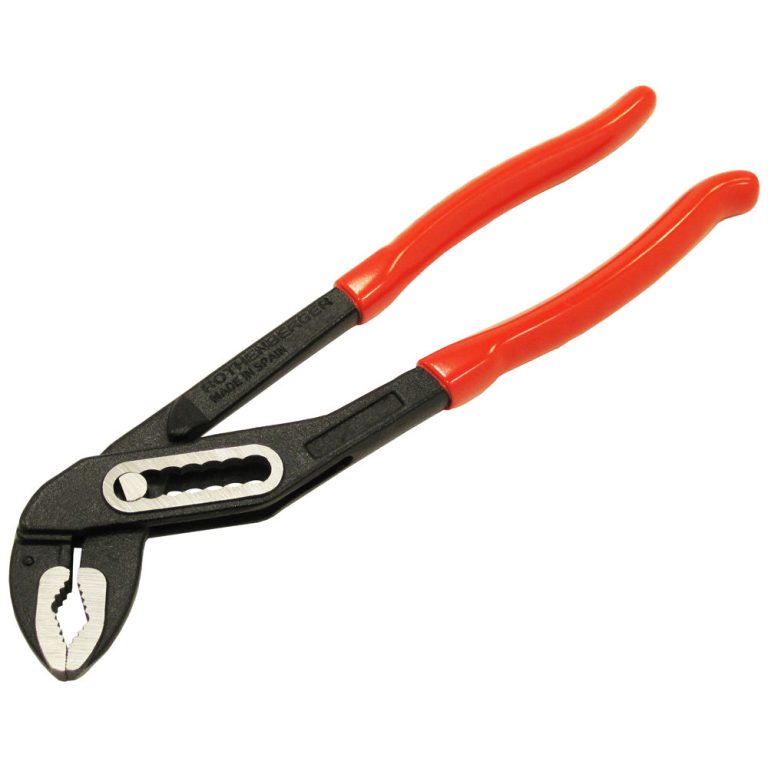Introduction to Long Needle Nose Pliers
Long needle nose pliers are a versatile tool. They reach into tight spots where regular pliers can’t. With their long, tapered jaws, they grip small objects and bend wires with precision. These pliers are a staple in many toolboxes, from electricians to jewelers.
Crafted from steel, their pointed tips provide great control. The handles often have a comfortable grip to prevent slipping. Some have a cutting edge near the base for snipping wire. Others might feature serrated jaws for extra hold.
Their design makes them unique. Regular pliers don’t have the same reach or precision. When you use long needle nose pliers, you handle tasks with care. Their slender shape allows for accuracy in detailed work.
In this guide, we will explore their essential features. We will discuss their many uses, how to pick the right pair, and how to use them safely. We’ll also look at their maintenance and clear up some common misconceptions. Having a pair of high-quality long needle nose pliers is crucial for precision tasks. Let’s learn how to master this valuable tool.
Essential Features of High-Quality Needle Nose Pliers
When searching for long needle nose pliers, quality is key. There are several features to look for in a high-quality pair that can ensure durability and precision in your work.
Materials and Construction: The best long needle nose pliers are typically made of high-carbon steel or stainless steel which resists corrosion and maintains sharpness over time. They should have a sturdy construction that prevents wobbling in the joints.
Jaw Design: A precise tip allows for fine manipulation of small parts. The jaws should meet evenly, without gaps. Some feature serrated jaws to grip objects firmly.
Cutting Edge: High-quality pliers often include a cutting edge near the handle base. This edge must be sharp enough to snip wires cleanly without fraying.
Spring Action: Pliers with a spring-action mechanism can reduce hand fatigue, as they open themselves after squeezing. This is especially valuable for tasks that require repetitive motions.
Handle Grip: Look for handles with a comfortable, non-slip grip. It provides better control and decreases the risk of accidents. Ergonomic designs can also minimize strain during extended use.
Adjustability and Tension: High-end models may offer adjustable tension. This allows you to customize the tool’s performance to your task.
In conclusion, do not compromise on these essential features. They make the difference between a frustrating experience and a satisfying one when working with long needle nose pliers.
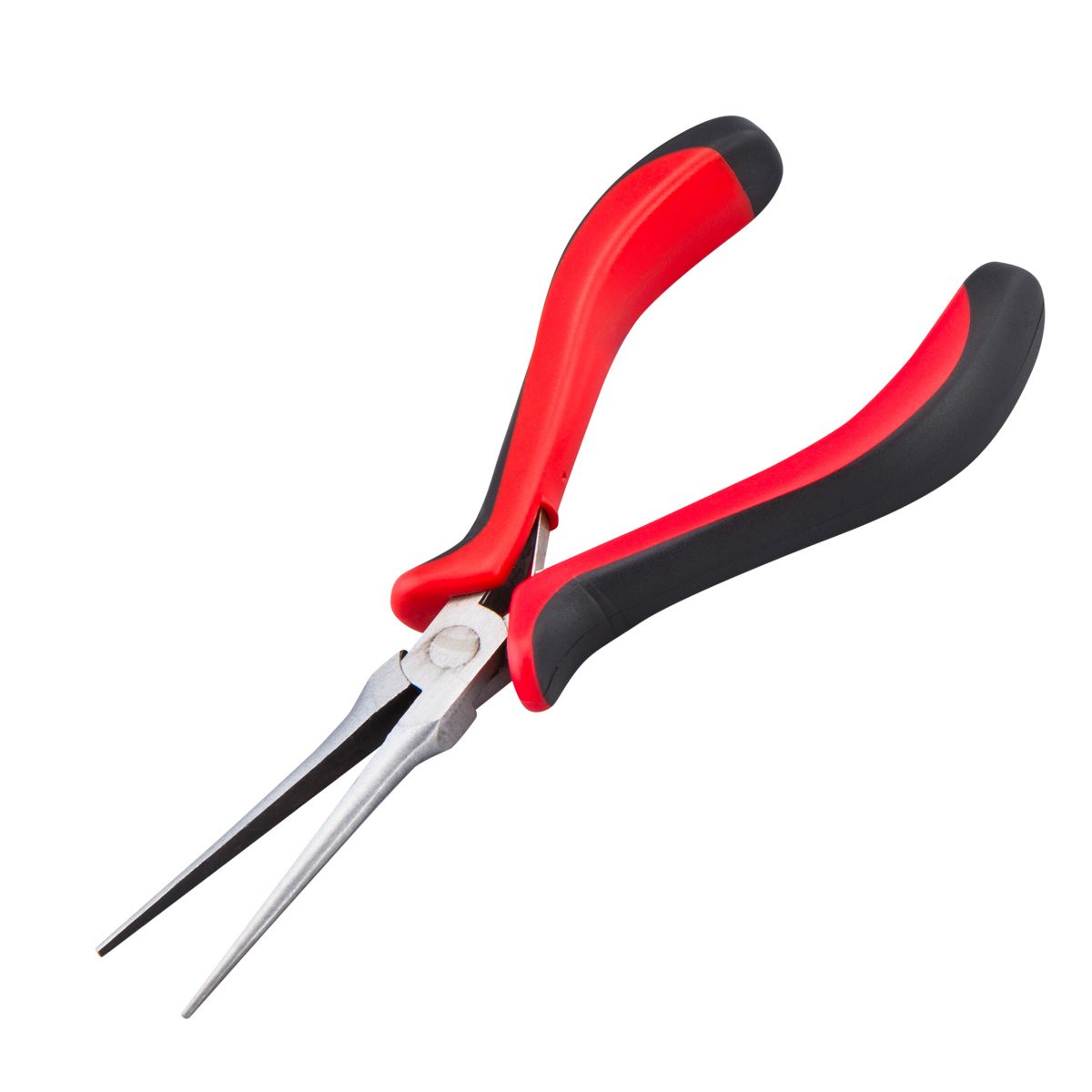
The Various Uses of Long Needle Nose Pliers
Long needle nose pliers excel in multiple areas. Their unique design offers precise control for a variety of tasks. Here we explore some of their practical applications.
Jewelry Making: Jewelers often use these pliers. They help in bending wires and placing tiny beads.
Electrical Work: Electricians rely on them. They bend, cut, and grip wires in tight spaces.
Crafts and Hobbies: Hobbyists find them useful. They help in model building and intricate craftwork.
Fishing: Anglers use them to remove hooks from fish. Their long jaws reach into the fish’s mouth safely.
Home Improvement: They assist in gripping small nails and staples. They’re handy in spaces too small for fingers or regular pliers.
Automotive Repairs: Mechanics reach for them in tight engine spaces. They bend and hold small parts during repairs.
As you can see, long needle nose pliers serve many purposes. They’re not just for professional use. DIY enthusiasts and homeowners can benefit from them too. Their versatility makes them a valuable addition to any toolbox.
How to Choose the Right Needle Nose Pliers for Your Needs
Selecting the right long needle nose pliers requires careful consideration. Here are key points to guide you:
- Assess the Task: Think about the job you’ll tackle. Match pliers to the task for best results.
- Check the Length: Plier length varies. Longer pliers reach deeper, whereas shorter ones offer more control.
- Inspect the Jaws: Look for pliers with jaws that meet well. This ensures a firm grip on small items.
- Examine the Cutters: If you’ll cut wire, choose pliers with a sharp cutting edge.
- Handle Comfort: Pick pliers with a comfortable grip. This will help you work longer with less strain.
- Spring Action Preference: If you do repetitive work, go for pliers with spring action. This feature reduces hand fatigue.
- Material Quality: Opt for stainless steel or high-carbon steel. These materials are durable and resist corrosion.
Each feature must match your needs. A jeweler might prioritize precision, while an electrician needs a reliable cutter. Always choose quality over price. Good pliers last longer and work better. A well-chosen pair of long needle nose pliers can be a game-changer for your projects.

Basic Techniques for Using Long Needle Nose Pliers
When mastering the use of long needle nose pliers, certain techniques can enhance precision and ease. Here’s a look at some basic methods:
Grasping Small Items: To hold tiny parts, use the pliers’ tips. Gently squeeze the handles to grip the item firmly without crushing it.
Bending Wires: Position the wire close to the base of the jaws for better leverage. Apply steady pressure as you bend to achieve the desired angle.
Cutting Wires: If your pliers have a cutter, place the wire near the hinge and squeeze the handles. Ensure a swift, clean cut to avoid fraying.
Pulling Wires Through Tight Spaces: Grip the wire tip and slowly thread it through. The long jaws make this task easier by reaching confined areas.
Creating Loops in Wire: Loop the wire around one of the jaw tips. Rotate the pliers to form a perfect loop.
Always work with care and avoid overexerting force. This prevents damage to both the tool and the project. With practice, these techniques using long needle nose pliers will become second nature.
Maintenance and Care for Long Needle Nose Pliers
To keep your long needle nose pliers in top shape, follow these maintenance and care tips:
Clean Regularly: After each use, wipe your pliers with a clean cloth to remove debris. For tough residue, use a mild solvent.
Lubricate Joints: Apply a drop of oil to the joints to keep them moving smoothly. This also prevents rust.
Inspect for Damage: Check the jaws and cutting edges for wear or damage. Replace the pliers if needed.
Store Properly: Keep your pliers in a dry place. A toolbox or a drawer can protect them from moisture and dust.
Handle with Care: Avoid dropping your pliers. Falls can misalign the jaws or damage the tips.
Avoid Overheating: When working with hot wires or materials, let them cool first. High heat can temper the steel and weaken the pliers.
Sharpen Cutting Edges: If equipped with a cutter, sharpen it when it becomes dull to ensure clean cuts.
By caring for your long needle nose pliers, you ensure their longevity and performance. Regular upkeep is the key to keeping them as precise and effective as when you first bought them.
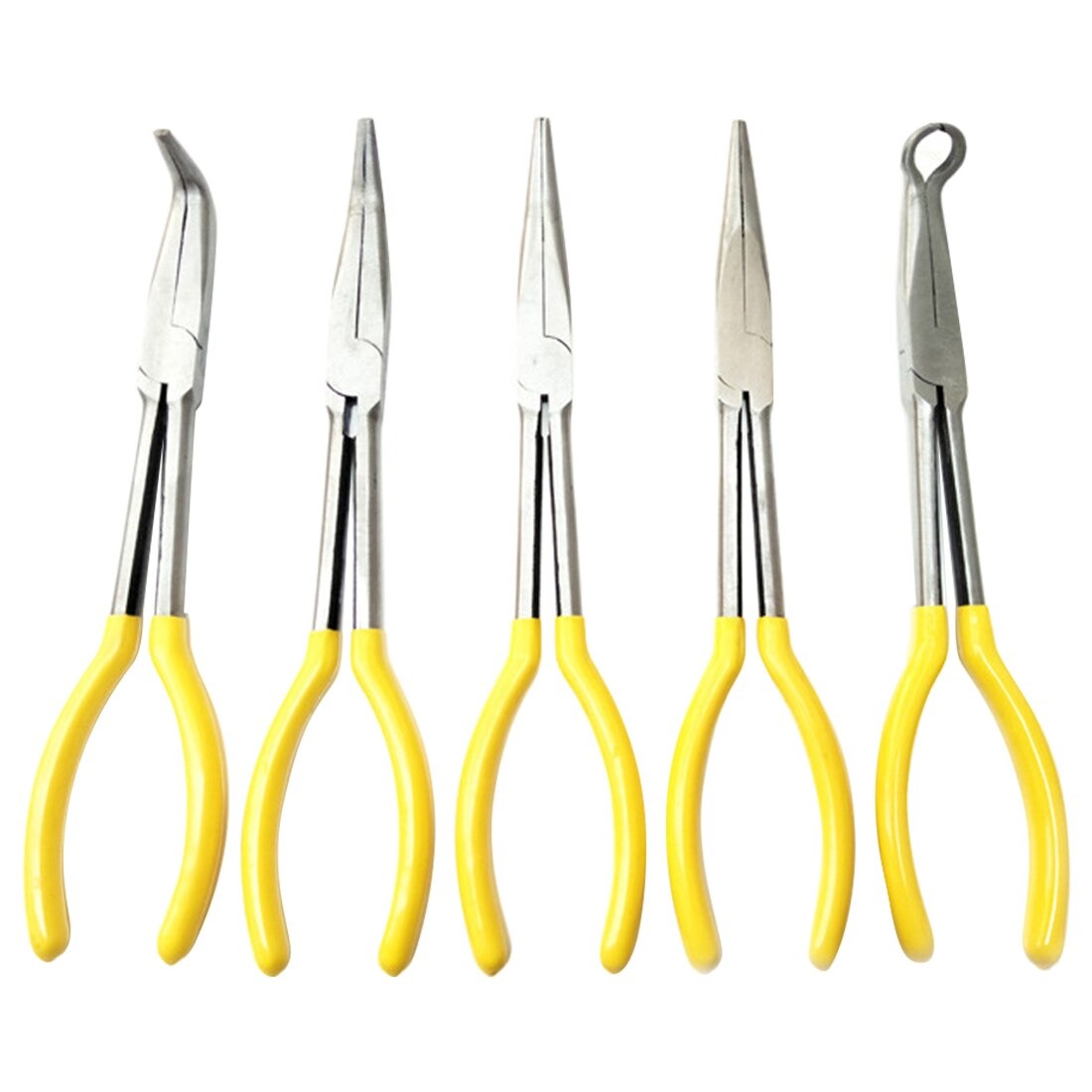
Safety Tips When Handling Needle Nose Pliers
Safety is important when handling any tool, including long needle nose pliers. Here are some practical tips to ensure you use them without putting yourself at risk:
- Wear Protective Gear: Always wear safety glasses to shield your eyes from wire clippings and debris. Gloves can protect your hands from sharp edges and improve grip.
- Inspect Before Use: Check the pliers for damage before each use. Look for cracks, rust, or loose joints that could impair function or safety.
- Use the Right Tool for the Job: Do not use long needle nose pliers for tasks they are not designed for. This can lead to injury or tool damage.
- Work in a Well-Lit Area: Good lighting helps you see what you’re doing and avoid mistakes. This is crucial for precision work.
- Don’t Overreach: Keep your work within a comfortable range. Stretching too far can cause you to lose balance and control.
- Keep Focused: Stay alert while using pliers. Distractions can lead to slips or improper use of the tool.
- Ensure Secure Grip: Hold the pliers firmly to prevent them from slipping. A secure grip also allows for better control and accuracy.
- Cut Properly: When cutting wires, make sure the cutting edge is facing the correct direction. Cut at right angles, not at a slant, to prevent blade damage and achieve a clean cut.
- Use Two Hands When Necessary: Sometimes, it’s safer to use both hands to stabilize the tool. This provides extra control for delicate operations.
- Store Safely When Not in Use: Place the pliers back in the toolbox or a designated spot after use. This prevents accidents and keeps them within easy reach for next time.
By following these safety tips, you can reduce the chance of injury and make the most out of your long needle nose pliers.
Common Misconceptions About Needle Nose Pliers
Long needle nose pliers are subject to myths and misunderstandings. These misconceptions can confuse beginners. Let’s clear up some common ones.
They are only for professional use: This is not true. While professionals use them, DIY enthusiasts and homeowners also find them handy for various tasks.
All pliers are the same: Each plier type has a unique design and purpose. Long needle nose pliers offer precision that other pliers may not.
They can replace other pliers: They have special uses, but cannot replace all other plier types. It’s best to have different pliers for different jobs.
They are too fragile for tough work: High-quality long needle nose pliers are sturdy. They handle tough tasks when used correctly.
It’s not important to maintain them: Regular care ensures your pliers last longer and perform well. Always clean and store them properly.
By understanding the truth about long needle nose pliers, you can choose and use them effectively. Don’t let myths misguide you. Remember these points and your pliers will serve you well.
